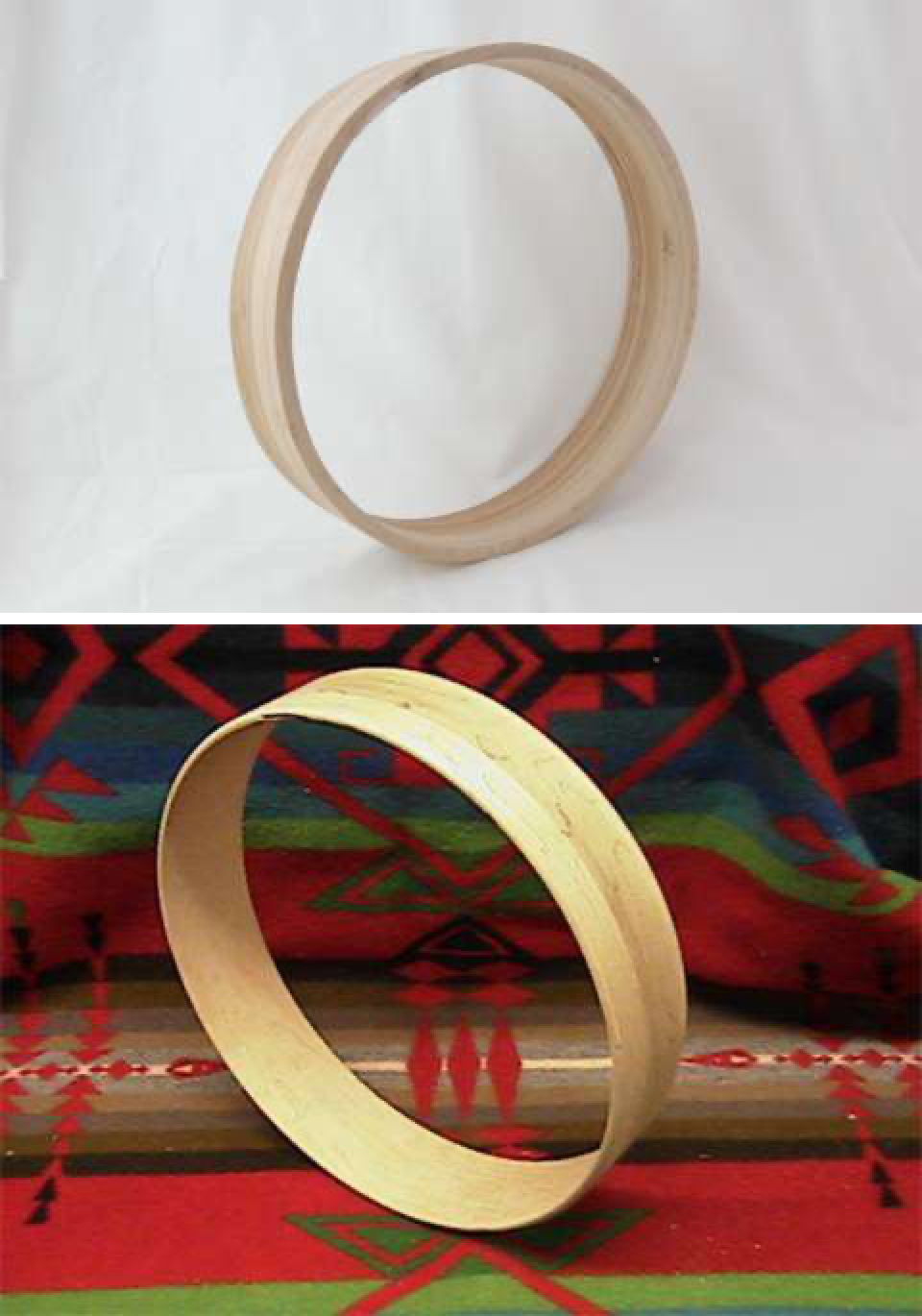Area 3: Native People in a Changing West
Lesson Plan Developed By Michael Redman, St. Stephens Indian School, St. Stephens, Wyo.
Grade Level
9-12
Content Area(s)
Social Studies
English
Math
Learning Objective(s)
Students will learn how to make a Native American drum from beginning to end. Students will learn the Art of lacing and looping the rawhide straps on the back side of the drum so the drum head dries tight and smooth. Lacing one loop at a time, they will continue this process until they have laced up all holes on the drum. Students need to be careful not to lace too tightly as this may cause over tightening of the drum, which could cause the head to split or the ring to twist and warp.
Standards
Click here to see a spreadsheet aligning Wyoming State Social Studies and Common Core Standards for this and other digital toolkits of Wyoming History.
Length
Two 45-minute class periods, plus overnight rawhide-soaking time before the class begins and overnight drying time between the two classes.
Materials Required
- One 15" wooden drum ring. These can be purchased on line, or teachers and students may want to collaborate with wood-shop students to make them.
- One deer or elk rawhide. Rawhide is not leather as it has not been tanned. The hair has been removed from the hide, and it has dried stiff. When soaked in water it becomes soft and pliable and can be stretched over a drum ring to make a drum. When it dries again, it dries hard and tight. Rawhide from one deer, for example, could make three to five hand drums, depending on size.
- Four 8-to-10-foot long, ¼-inch wide rawhide straps. Students may have to cut the straps out themselves from excess parts from the deer/elk rawhide.
- Tin snips.
- Leather hole punch.
- Flexible measuring tape.
- 12" Ruler.
- Package of pencils.
- Ordinary scissors.
- Thirteen-gallon trash container. This will be needed for students to fill with water to allow the pre-cut drum head and holes and rawhide straps to soak overnight. Note: this process must be done one day before the first class begins. Also keep container in a safe cool place.
- Native American hand drum template sheet/diagram.
- Introductory video: “Arapaho Drum,” https://youtu.be/mruSiS8r2-8; or see the video linked from the “Preserving the Ways—Culture and Tradition” module at Wyoming PBS’s Wind River Education website, http://windriveredu.org/wpw.html.
- Instructional video: “How to Make a Hand Drum” at https://youtu.be/qKrP17frXEs.

